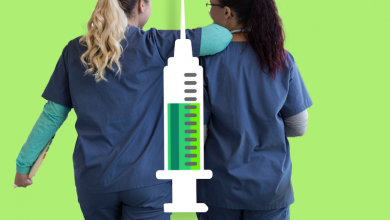AI helps turn radiology reports around 82% faster at one outpatient imaging site


Headquartered in Scottsdale, Arizona, SimonMed is one of the largest outpatient medical imaging providers and radiology practices in the United States. It covers 10 states with more than 150 locations and more than 200 subspecialty-trained radiologists.
SimonMed offers the full modality of diagnostic scans, including 3T MRI, CT, ultrasound, 3-D mammography, PET/CT, nuclear medicine, DEXA, X-rays, and others.
Answering key questions
The provider organization was looking at AI tools to improve patient care and boost its diagnostic tools.
“For example, we now use AI ‘triage’ programs such as AI to identify potential fractures or pneumonia,” said Dr. John Simon, CEO of SimonMed. “These cases are marked STAT and move up in the radiology reading queue to be read generally in less than 10 minutes. This ability to triage fundamentally resets the expectations of turnaround for positive cases and will continue to progress into other exams.
“In terms of enhanced diagnostic tools, 3-D breast AI offers a second read for our 3-D mammogram program, which ensures excellent sensitivity and specificity of our team,” he continued. “Another way AI enhances our diagnostic tools is to identify findings not necessarily visible to the radiologist, such as mapping asymmetric brain volume loss or disrupted white matter pathways or calculating blood flow in coronary arteries.”
Before implementation of the AI tools, the common questions SimonMed staff had included:
-
How can we get positive cases identified and clinical providers and patients notified more quickly?
-
How can we improve our sensitivity and specificity in our reporting?
-
Is there additional quantitative or patterned data not visible to the radiologist but present within the imaging?
-
How can we more accurately compare to prior exams?
Ensuring access
“Our approach with AI is to integrate it within the radiologist workflow but ensure they have access to the powerful technology underlying these programs,” Simon explained. “Some programs provide straightforward overlays of images but the trend with more sophisticated programs is to provide a platform for the specific program.
“We use these programs to ensure the AI findings are optimized for each patient,” he continued. “We also introduce this technology to referring providers. For example, volumetric measurements for lung nodules are generally more sensitive than 2D measurements in the evaluation of change, but much of the standardized reporting protocols focuses on 2D while we have known for years that volumetric is generally more accurate.”
Incorporating this new knowledge appropriately into clinical care will take collaboration between teams, he added.
Success metrics
SimonMed conducted a study of results to date. The AI tools have turned radiology reports around 82% faster than readings without the automation, Simon reported. In the performance analysis portion of the study to evaluate quality, 1,442 patients across 14 SimonMed centers were used to determine the technology has a 96.9% to 100% sensitivity range per bone.
Other provider organizations looking to work with similar AI should view the technology both for triage and diagnosis, Simon advised.
“The requirements will be somewhat different and with different KPIs,” he concluded. “In terms of enhanced diagnoses, the tools can be truly remarkable, so it is important to be open-minded and curious as this is a rapidly evolving field.”
Follow Bill’s HIT coverage on LinkedIn: Bill Siwicki
Email him: [email protected]
Healthcare IT News is a HIMSS Media publication.




